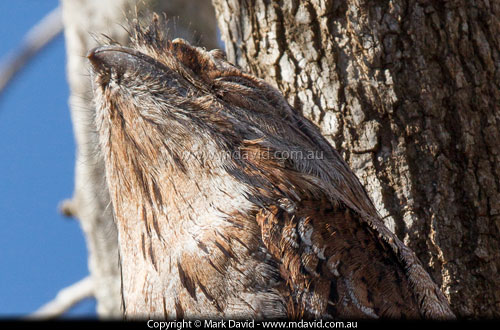PAGE 1 | PAGE 2 | PAGE 3 | PAGE 4 | PAGE 5 | PAGE 6 | PAGE 7
February 23, 2014

Dogs are a photographer’s best friend. Or at least, as photographic subjects they’re hard to beat.
The only problem is that they move really fast.
So the cool thing is, auto focus on modern digital SLR cameras can work a whole lot faster than our thumbs can, which means it’s now possible to get the kinds of action shots that were just too difficult in the old days.
But where do you start?
Because the biggest challenge is dealing with motion blur I always like to start by switching my camera over to shutter speed priority mode (sometimes called time value priority mode) and then I set the shutter speed to something fast. Like 1,000th second. And of course I use continuous (servo) focus because the distances to the dog will always be changing. As for all the rest, I talk about that in a new article about taking action photos of dogs.
February 20, 2014


People keep asking me why I’m not on Facebook or Google+. Well as of from now I’m on both. I’ll try running these What’s new posts in both of those sites, which means it should be easier for you to see them, depending on which platform you prefer.
Being new at this social networking stuff I’m sure to make every mistake possible. So I’m sorry if I do the wrong thing or fail to respond to something properly. It’s not that I’m ignoring you — it’s just that I haven’t a clue about what I’m doing. I’ll try my best not to embarrass myself or bother you too much.
Anyway, like I said, the stuff I’m posting at those sites will be pretty much the same as what’s going on this page. You can find me at Facebook here and at Google+ here.
February 20, 2014

Something happened this week which perfectly illustrates the kind of approach that causes beginners to keep being disappointed by their photos.
I was chatting over the fence to a neighbour and an Eastern Grey Kangaroo approached in one of the paddocks across the road. That little pic shown at the top of this post shows another Eastern Grey in that very same paddock, except that one was photographed on another day.
So where was I? Oh yeah. Chatting to a neighbour and a kangaroo stops behind some old posts and watches us. And just then, a little joey pokes its head out from its pouch. Awfully cute.
My neighbour got really excited about that. “What a perfect photo! Where’s your camera?”
So there you have it. That’s the approach I’m talking about — the one that would have led to disappointment. The truth is I wasn’t the least bit bothered by not having my camera with me. If I’d taken a photo at that moment I knew it would have turned out really bad.
First of all, the light was awful. Nothing like the light in the photo above. The kangaroo was in deep shadow less than half an hour before complete darkness. My camera’s pretty good in dim light but not that good. It would have struggled to find focus and then it would have needed to reach into its highest ISO levels (resulting in noise), and it would have given me a slow shutter speed (resulting in motion blur). And the deep shadows with the sun hidden low behind the hills — well, that would have made everything look washed out and kind of grey-blue.
And then there were the fence posts. I had to kneel really low down to see the joey because of those posts in the way. You see, beginners often get so excited by what they’re photographing that they forget to think about all the rubbishy, distracting other things that find themselves in the shot. Those posts would have made the roo look like it was caged in, making the whole scene look artificial. All they were doing was blocking a nice shot of the animals. I mean, I’ve got nothing against fence posts if they enhance a shot or if they’re part of the story. But these ones were just getting in the way.
Believe me when I say that when I started in photography I would have taken a shot in a situation like that, and then wondered why my pictures were never any good. All those years of taking dud shots taught me to think a lot more about what I was really getting my camera to capture at the time I was taking it. I mean, the quality — or amount — of light makes an enormous difference. That seems obvious but people often forget it. And to ensure that the bits that get into a shot are meant to be there. Sometimes you just have to move a bit to the side to get a better composition and prevent unnecessary clutter getting into the shot. Fence posts, that means you. It’s not much work, and yet most beginners don’t even do that. They just see something cool and start firing. So on that day with the roo I could have sneaked across to a better vantage point to compose my shot, but then I would still have been stuck with that extremely poor, fading light.
Nope, I knew that wasn’t a time for photography. It was a time for just watching and enjoying the sight. And so that’s why I’ve had to use a photo from another day to go with this post. And also why I can now exaggerate a whole lot about the scene that didn’t get photographed. Um, yes. There were twenty kangaroos and they were all waving. In perfect time with each other. If only you’d been there.
February 20, 2014

About a week ago I almost trod on a snake. It turns out it was dead, and a harmless species too. But I’ll tell you right now, “dead” and “harmless” are never what’s flashing through your mind in that instant you notice your foot descending on a snake. Hell no. What happens is that the part of your brain that recognises snake speed-dials the part of your brain that has heard all about Taipans and Eastern Brown Snakes. At this point, another part of your brain kicks into action. I’m talking about the bit that makes feet do whatever kind of undignified dance is necessary to steer them in the opposite direction from the snake.
So I guess that’s nothing unusual. What I found interesting was what happened the very next day.
I was doing the same walk and came across the same snake. Did I anticipate the snake and calmly walk around it? No. Because I’d completely forgotten about it. So it was pretty much a perfect re-enactment of the previous day’s dance.
So you’re thinking, well okay I forgot about the snake. But surely the day after that I would have remembered, right?
Sadly no. I’m talking more dancing. (And is that such a bad thing? I mean, dancing gives you a better cardio workout than walking.)
It wasn’t until the 4th day of doing that same walk that I remembered to anticipate the snake and calmly walk around it. That means I got 3 pretty decent surprises out of just the one snake, which is either great value or bad depending on what you think of snakes. And I asked some other people who frequented that trail and they told me they kept being surprised by it too. So there you go. It’s not just me.
You see, the thing about snakes is that you practically never expect to encounter them. I mean, it’s not like we choose our shoes according to what colour looks nicest next to snakes. No, even if there was a dead snake encountered the day before you tend not to assume that your immediate walking future involves stepping around them. Okay, perhaps in the city you’d remember an encounter because finding a snake is more unusual but in the bush it’s not such a big deal. So when you see one, despite a moment or two of really bad dancing, you don’t remember it as much.
So what has all of that got to do with updating this website? Absolutely nothing. I’ve been fine-tuning some of the design stuff and cleaning up some code.
January 29, 2014

A friend of mine was asking me how I keep finding Tawny Frogmouths in the wild. I mean, the birds don’t make it easy. They sit very still on a branch, often with their beak in the air and their eyes closed, and with plumage resembling bark they look just like a branch.
And that’s how I keep spotting them. You see, when you stop looking for birds and instead start making yourself alert for impossible looking branches, that’s when you spot them. Because the “branch” is of course the frogmouth.
I use a similar technique to find stick insects. When looking for those guys, I don’t even try looking for insects, because they don’t even look like insects. Instead, I keep an eye out for what they really look like, which is a thin “stick” with smaller “branches” coming off it in perfect symmetry. You see, sticks like that don’t exist — or if they do then they invariably turn out to be a stick insect.
But I didn’t mean to get distracted by stick insects. I was talking about Tawny Frogmouths. So here’s a question for you: Is the Tawny Frogmouth an owl? It turns out that most people get the answer wrong.
January 27, 2014

There’s a trick I used to rely on a lot in my newspaper work when I needed an image to look old. This wasn’t an attempt to misrepresent a story, but more an attempt to simply make an illustration that looked nice. Being a newspaper job you normally get about a minute to do ten minute’s work, so the faster your technique, the better.
This method for creating an instant sepia look to a photo was mighty handy because it could literally be done in a few seconds. Which meant I had a full 50 seconds or so left of wonderful leisure time to sit back and relax before starting my next “ten-minute” job.
January 25, 2014
Why does this site keep changing its appearance?
There are a few reasons.
First of all, if you build a website using modern HTML and CSS it’s just too easy to change the look of it later. You see, you stick all the content into your HTML page and then use a style sheet (CSS) to tell it how it’s going to look. Any time you want to change the look you modify a few bits in your CSS and whammo! Your whole site falls into a new shape.
So there’s that.
Then there’s the not-insignificant point that whenever I like the look of something I’ve done one day I invariably change my mind about it the day after. Yes I know — that makes me a poor candidate for tattoos.
And having said that, much of the redesign is pretty much done now, after a whole bunch of small changes. You see, my stats show that more and more people are visiting this site on tablets and phones, and so this is leading to another reason for all the recent changes: I also wanted to make a site that worked better on those smaller screens.
I thought about that option of making it so it detects what you’re viewing it on and then moulds itself into the version designed for it. But then I never really liked those kinds of sites — I always end up feeling like I’m getting a dumbed-down experience, you know, with tiny pictures and reduced text and fewer options and not being able to zoom in and all that stuff. So rather than serve up a reduced experience I wanted to produce one design that works fine on all platforms while also reducing bandwidth for mobile users. So along the way I’ve been further optimising much of the imagery on the site to get those file sizes way down.
The question I’m facing now is, should I also redo the site to work with retina screens?
Retina screens are an interesting case. They render type in a way that requires no extra work from me, but publish images at double resolution. Ideally I should have a site that detects if it’s been viewed on a retina display and then if it decides it is, then it substitutes the images with double-resolution ones, for that super-crisp retina experience. There’s no way I’d serve up double-resolution images for everyone though, because on mobile phones it would be awful. I mean, double resolution images means four times as many image pixels and that would do extremely bandwidth-unfriendly things to the folks coming here on mobiles. So it really would have to be two sets of images — one for the retina displays and another set for the rest of us.
So I know what some of you are thinking. Why didn’t I just redesign my site once offline taking all those things into account, then upload it once and be done with it? Instead of countless changes?
Well, a wiser person would surely have done just that. But the thing is, I’m not a wiser person. I mean, how could I be? Because if I was I’d be wiser.